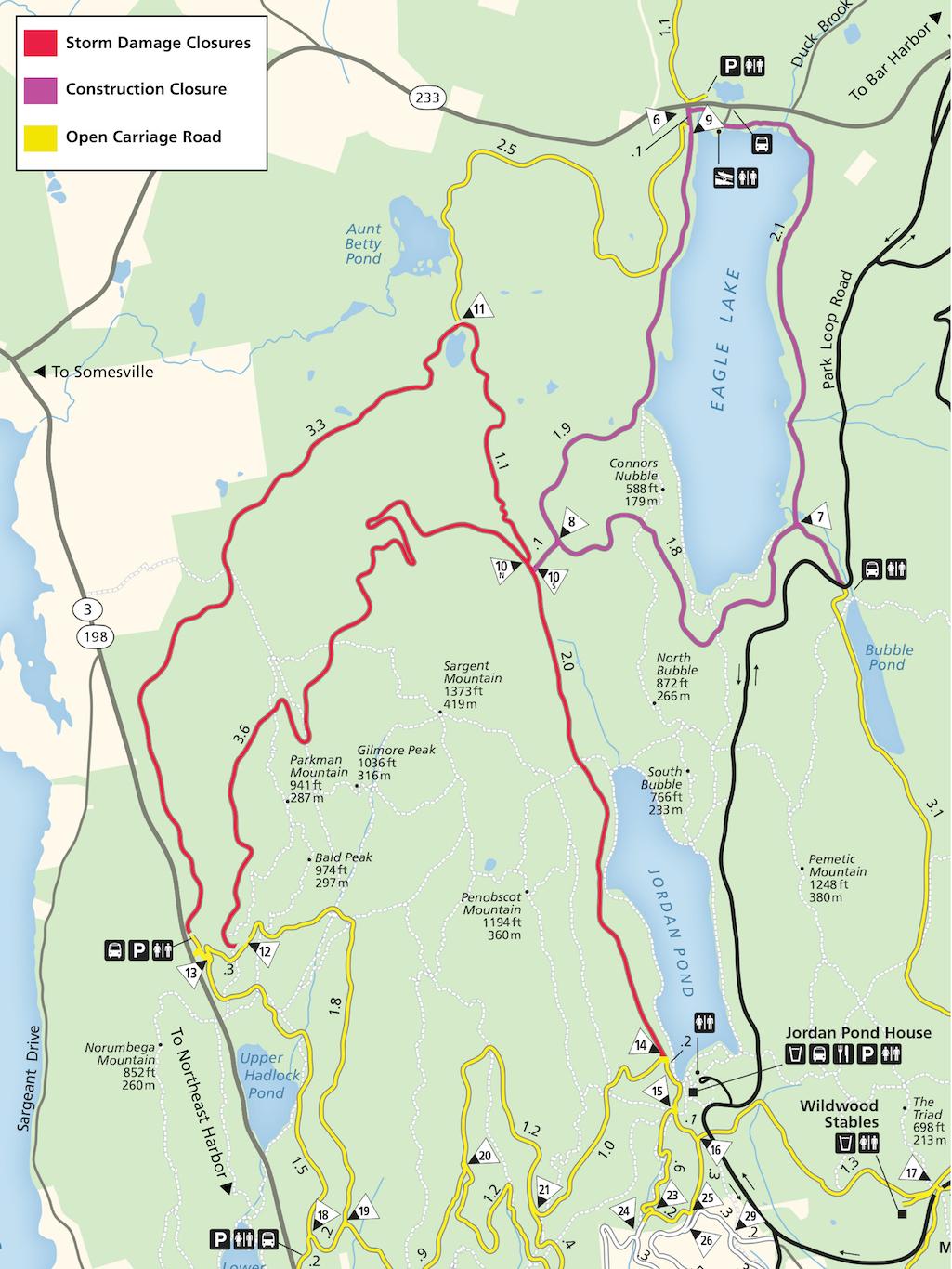
A torrential rainstorm has forced closure of 10 miles of carriage roads in Acadia National Park/NPS
Torrential rains have forced the closure of 10 miles of carriage roads at Acadia National Park, and hikers could encounter washed out bridges in certain areas of the park.
The storm last week also led to closure of the Wild Gardens of Acadia at Sieur de Monts, Schoodic bike paths, and Schoodic Head Road. The short duration and intensity of the rainstorm makes it one of the most exceptional weather events in the park’s history, park staff said.
The peak of rainstorm occurred between 4:30 a.m. and 7:30 a.m. on June 9, with rainfall totals varying widely across the park. The recorded rainfall totals in the park ranged from 2.5 inches at Jordan Pond to 4.7 inches at the Cadillac Summit. The U.S. Geological Survey stream gage at Otter Creek reached a stage (water level height) of almost 10 feet during the peak of the rainstorm, an increase of 8.5 feet from the week before.
"Thousands of visitors enjoy the carriage roads every day of the summer, and we recognize the importance of opening them as soon as possible,” said Superintendent Kevin Schneider. “We will seek emergency funds and use emergency contracting procedures to repair the damage within the next few months.”

Nearly a quarter of the carriage road system at Acadia National Park has been closed by storm damage/NPS
While the National Park Service is still surveying the damage throughout the park, the carriage roads were hit hardest by the rainstorm. The historic carriage roads were constructed from 1913 to 1940 and engineered to withstand heavy rainfall. The carriage roads consist of three layers of rock graduating from large to fine-sized stones at the surface with a substantial crown to ensure good drainage. Stone culverts and deep ditches provide channels to direct runoff away from the gravel surface of the carriage roads.
The rainstorm was so intense that the volume of water overwhelmed the drainage features and washed out significant portions of the closed carriage roads making them unsafe for visitor use. In many locations, the top two layers of rocks were completely removed.
In addition to the 10 miles of carriage roads closed due to the storm damage, 6.3 miles of carriage roads remain closed for the planned reconstruction of the loop around Eagle Lake. For specific information on the carriage road closures and updates on current conditions, please visit https://www.nps.gov/acad/planyourvisit/conditions.htm.



Add comment